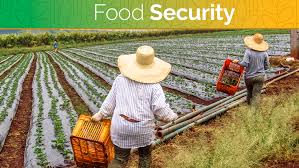The Food and Agriculture Organisation (FAO) has warned that increase trend of child labour in agriculture threatens the wellbeing of millions of children and undermines efforts to end global hunger and poverty.
The organisation yesterday in it report on child labour said after years of steady decline, child labour in agriculture has started to rise again in recent years driven in part by an increase in conflicts and climate-induced disasters.
The report revealed that the number of child labourers in agriculture worldwide has increased substantially from 98 million to 108 million since 2012 after more than a decade of continuous decline, according to the latest estimates.
Prolonged conflicts and climate-related natural disasters followed by forced migration have pushed hundreds of thousands of children into child labour.
“Households in Syrian refugee camps in Lebanon, for example, are prone to resort to child labour to ensure the survival of their family. Child refugees perform a number of tasks: they work in garlic processing, green houses for tomato production, harvest potatoes, figs and beans. They are often exposed to multiple hazards and risks including pesticides, poor field sanitation, high temperatures, and fatigue from doing physically demanding work for long periods.
“At the same time, efforts to eliminate child labour in agriculture face persistent challenges, due to rural poverty and the concentration of child labour in the informal economy and unpaid family labour,” the report said
FAO stresses that child labour in agriculture is a global issue that is harming children, damaging the agricultural sector and perpetuating rural poverty.
“Children who work long hours are likely to continue to swell the ranks of the hungry and poor. As their families depend on their work, this deprives the children of the opportunity to go to school, which in turn prevents them from getting decent jobs and income in the future,” said FAO Deputy Director-General (Programmes), Daniel Gustafson.
“Since more than 70 percent of child labour worldwide takes place in agriculture, it is vital to integrate child labour into national agricultural policies and address the issue at the household level.
Blueprint gives you the latest Nigerian news in one place. Read the news behind the news on burning National issues, Kannywood, Videos and the Military



